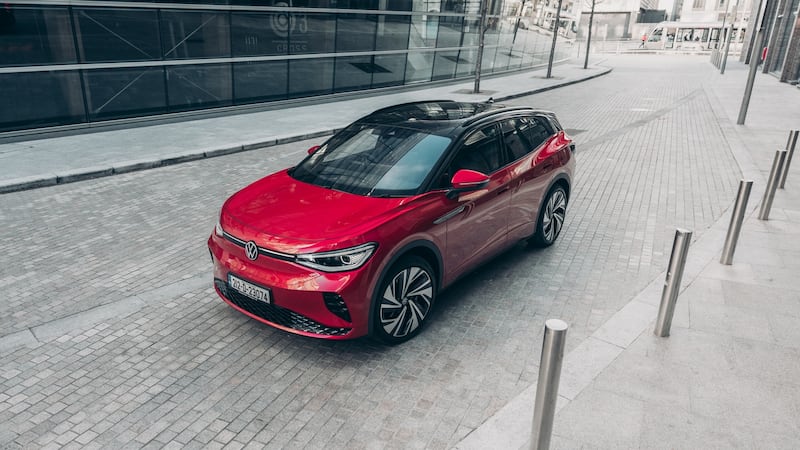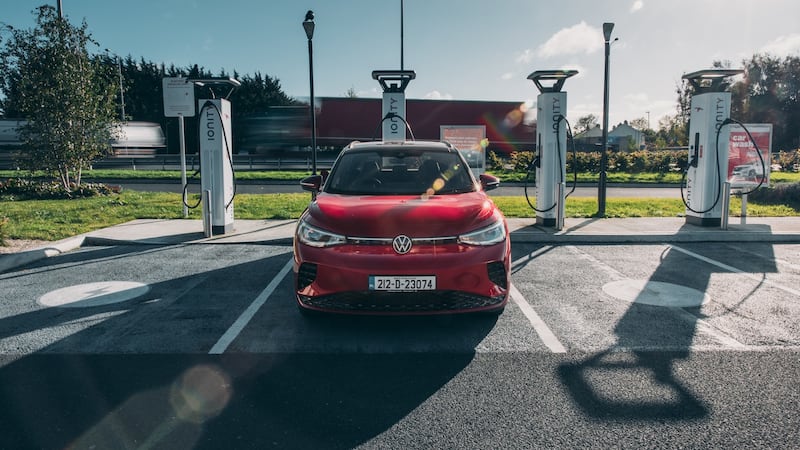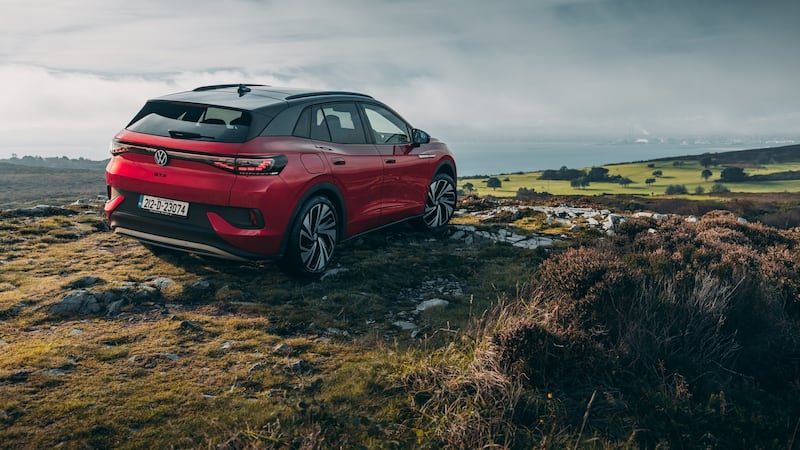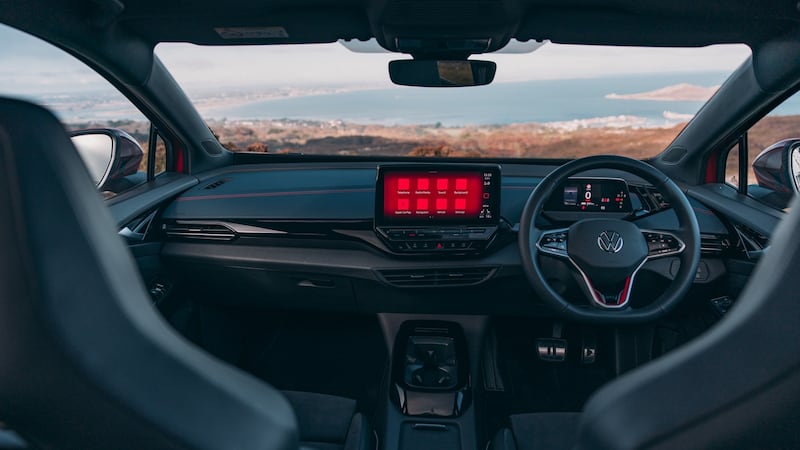Amid growing concern over inflation, it’s worth considering the prices of many electric cars these days. Forget about the premium brands, where €40,000 barely gets you in the door. We’re talking about household names, long the staple brands of Irish driveways.
How about a Ford for €60,000? Or a Korean crossover from Kia or Hyundai for €50,000? Or a €40,000 Renault Megane?
Five years ago these prices for cars from mainstream brands would have seemed absurd, the preserve of models destined to gather dust in showrooms; vanity projects by ego-driven chief executives to become premium players.
Yet the upheaval of the electric age has led consumers to consider a €54,000 Volkswagen aimed at family buyers entirely plausible. The ID.4 was in Ireland’s top 20 best-selling cars last year, and topped the list of new electric cars registered in 2021.
The issue we’ve had in the past with the ID.4 is the logical debate about opting for an ever so slightly larger version of the ID.3 – and the price you have to pay. On paper it doesn’t seem to merit the extra spend. Yet there is no escaping the fact the ID.4 looks more imposing and impressive on the road than its sibling. And for many buyers that’s where it’s at.
Now VW has added to its alphabet soup of EVs with a GTX version. By christening it with those well-known letters, it bestows upon it membership of VW's elite. According to the car firm, GTX sits alongside GTI, GTE and GTD. Stellar company indeed.


In reality it means this ID.4 gets an extra 95hp courtesy of an extra motor driving the front wheels, now accompanying the motor powering the rear ones. The end result is better poise, performance and grip.
That’s supposedly the justification for the price leap from regular ID.4 to GTX. And it’s a sizeable leap. The starting price of an ID.4 Business model is €53,695 after grants, but the GTX Max we tested carried a price tag of €70,637. But like the ID.3 vs ID.4 debate, does the sum of the parts add up to much more than it appears on paper?
The first thing to say is that the car is wonderfully smooth and refined to drive. Even the Hyundai Ioniq 5, The Irish Times Car of the Year, isn’t quite as supple as the ID.4 on Irish roads. In fact luxury buyers would be hard pushed to match the blend of cushioned ride with accurate handling. There is a degree of body roll, but this is a 2.7-tonne car after all so expecting it to stay bolt upright through the bends is to question the laws of physics.
Of course, its impressive poise is largely down to the engineering prowess of VW Group’s MEB [modular electric drive matrix] platform. Its ability to wash out even the worst imperfections on the road surface without sacrificing on the car’s handling is exemplified on the Audi Q4 e-tron, but many of the same talents are on display in this GTX.
The additional motor drives the front wheels, bringing the total power output to 299hp. That’s a substantial amount of power to deliver on the tarmac, particularly given the way electric cars hurtle off the line. What all-wheel drive does for electric cars is prevent the sort of understeer and oversteer – and wheel spin – we have regularly encountered with EVs on wet roads and roundabouts.
That added ability to transfer power to the asphalt comes at a price and not just in euros. The added weight of the motor brings the estimated range from its 77kWh battery pack down to 465km, compared to more than 500km for the non-GTX versions of ID.4.
In reality that range is likely to be noticeably lower in everyday motoring. Our personal experience has been that when it comes to delivering on promised range, the Koreans seem to be the most accurate in terms of matching estimated range with real-life driving.
The conundrum facing buyers is whether it’s worth the extra spend to step into a GTX over a regular ID.4. VW mentions this car in the same breath as the GTis of old, yet while it might have similar acceleration statistics, it certainly can’t match any GTi’s handling. But then it’s a 2.7 tonne SUV, not a family hatchback. Shoehorning some GT heritage into it is silly.


The real test is in the bends, and while it’s incredibly comfortable to drive, this GTX in no way as sharp as a GTi of any iteration I can recall. And for all the punchy acceleration of electric cars, this GTX doesn’t feel any faster than similarly priced rivals, or even noticeably quicker than the standard ID.4. And it has less range between charges.
Alongside the extra electric motor, you get a chunkier body styling and slightly improved interior trim. None of this would seem to warrant a five-figure price for a mid-range ID.4. If you are looking for a more engaging EV crossover to drive then try out the Kia EV6 or Ford Mustang Mach E.
When it first arrived I couldn’t see the logic in the extra outlay for ID.4 over the ID.3. By now I see the allure. VW has managed to create a crossover SUV that’s incredibly comfortable on long trips – or as long as your charge will last – while being spacious enough for a family. It’s also much better styled than the Audi Q4, particularly at the front. Some fiddly controls aside, the interior is a nice place to be and well cossetted from wind and road noise.
While €50,000-plus seems a hefty price for a Volkswagen family crossover, there is certainly merit in its purchase. But €72,180 and upwards for the GTX is a step too far. Volkswagen has built a smart-looking superbly comfortable electric crossover and should stop there. It’s not a sports car.
Lowdown: Volkswagen ID.4 GTX
Power: 223kW two-motor system matched to a 77kWh battery pack with a single-speed automatic transmission and four-wheel drive.
CO2 emissions (annual motor tax) 0g/km (€120).
Electric range: 465km.
Electric consumption: 18.0-19.2kWh/100km.
0-100km/h 6.2 seconds.
Price: €72,047 as tested; ID.4 starts at €46,789.
Our rating 3/5.
Verdict: Wonderfully refined, but it's no sports car.














